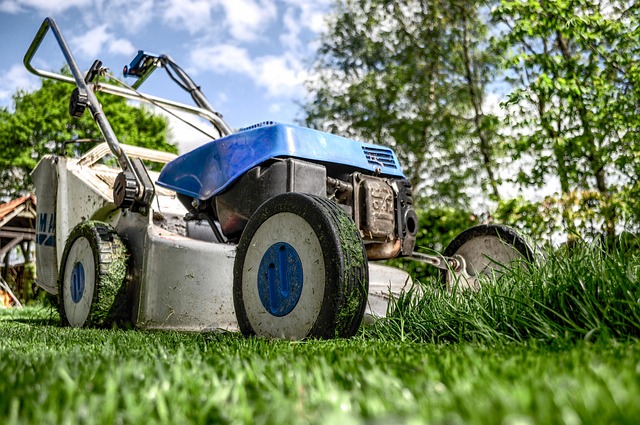Workflows That Reduce Routine Labor on Outdoor Projects
Practical workflows reduce repetitive labor on outdoor projects by combining planning, preventive maintenance, and clear crew roles. This article outlines approaches for landscaping, turf care, irrigation, horticulture, pruning, mowing, mulching, fertilization, and pest control that help teams work more efficiently while maintaining soil health and safety.

Effective workflows for outdoor projects start with intentional planning, clear roles, and repeatable procedures tailored to the site. By aligning scheduling, equipment readiness, and preventive measures, teams can reduce unnecessary visits, minimize reactive fixes, and maintain consistent outcomes across turf, plantings, and hardscape areas. Attention to soil health, drainage, and appropriate plant selection reduces recurring corrective work. This article explains practical workflows and coordination techniques that help crews perform routine tasks more efficiently while upholding safety and horticultural standards.
How can scheduling and crew management reduce labor?
Consolidated scheduling turns scattered tasks into predictable cycles. Establish weekly or biweekly blocks for mowing and pruning, monthly windows for mulching and targeted fertilization, and seasonal inspections for pest control and irrigation checks. Crew management benefits when experienced staff mentor newer members on assigned zones, and when responsibilities are documented so that ownership for specific areas is clear. Mobile checklists and shared calendars reduce duplicated visits and missed tasks, while pre-shift briefings align priorities and equipment needs, cutting downtime and improving consistency.
What equipment and safety practices lower routine work?
Standardizing equipment to match site scale and training crews on routine maintenance reduces time lost to breakdowns. Daily or weekly checklists for mowers, trimmers, pumps, and irrigation controllers catch small faults before they cause larger delays. Safety protocols — including PPE use, lockout/tagout for powered equipment, and safe chemical-handling procedures — prevent incidents that can stop work and require investigations. Staging tools and spare parts for planned routes shortens setup time and keeps teams productive without compromising safety.
How can irrigation and drainage workflows save time?
Smart irrigation controllers, grouped zone scheduling, and soil-moisture monitoring cut manual watering rounds and reduce overwatering problems. Map irrigation zones and record controller settings so adjustments are systematic rather than ad hoc. Include irrigation checks in routine site inspections to identify clogged heads or leaks early. For drainage, standard post-storm audits and a documented list of low points or recurring runoff areas let crews prioritize fixes and avoid repeated emergency repairs. Assigning inspection ownership ensures issues are logged and resolved efficiently.
How do mowing, pruning, and mulching workflows reduce effort?
Define mowing patterns, height-of-cut schedules, and frequency based on turf species to minimize stress that leads to extra maintenance. Bundle pruning by plant type and optimal season, completing comprehensive trims in one pass instead of multiple short visits. Schedule mulching to coincide with planting and seasonal cleanups to suppress weeds and retain moisture, reducing repeated weeding and watering. Zone-based workflows and completion checklists ensure related tasks—edging, debris removal, and mulching—are done together to limit site revisit needs.
How do soil health, fertilization, and pest control workflows help?
Regular soil testing and a documented soil health plan guide targeted fertilization and cultural practices, avoiding blanket applications that may be wasteful. Scheduled assessments detect compaction, nutrient imbalances, or pH shifts before they trigger recurrent problems. Integrated pest management uses monitoring, thresholds, and nonchemical controls where possible, with treatments recorded to track efficacy. Centralized records of soil tests, fertilization events, and pest observations enable data-driven adjustments that reduce labor-intensive follow-ups.
How does landscaping and turf management streamline projects?
Design decisions influence long-term maintenance burden: correct grading, appropriate plant selection, and proper installation reduce chronic upkeep. Choosing turf varieties suited to local conditions and following aeration and overseeding schedules builds resilience and reduces emergency restorations. Routine landscape audits that check drainage, planting health, and turf density identify small issues early. Coordination between design and maintenance teams ensures installed features match the available maintenance capacity, lowering recurring labor needs and improving landscape longevity.
Effective workflows for ground maintenance combine horticultural best practices with disciplined crew processes. By prioritizing preventive maintenance, standardizing equipment routines, and using scheduled inspections, teams can significantly reduce repetitive labor while maintaining safety and plant health. Over time, documented workflows and consistent record-keeping help refine timing and resource allocation so that outdoor projects remain manageable and sustainable.





